How to Dub YouTube Videos: A Step-by-Step Guide for Creators
Introduction
Dubbing YouTube videos is an increasingly valuable strategy for content creators aiming to reach a wider audience. As YouTube continues to grow as a global platform, creators who make their content accessible in multiple languages stand to benefit significantly. By dubbing your videos, you not only bridge language barriers but also open doors to diverse viewership across different cultures and regions.
The benefits of dubbing are multifaceted. Firstly, it allows you to connect with a broader audience, enhancing your video’s potential reach beyond its original language speakers. This can lead to a substantial increase in subscribers and viewers from around the world. Additionally, dubbing can improve engagement metrics such as watch time and interaction, as viewers are more likely to watch and understand content in their native language.
Moreover, dubbing your content can improve your channel’s discoverability. Videos in multiple languages are more likely to appear in search results across various regions, thus optimizing your channel for global visibility. Ultimately, dubbing not only enriches the viewing experience but also empowers creators to grow their brand internationally and foster a more inclusive online community.
Why Dub Your YouTube Videos?
Dubbing your YouTube videos into multiple languages offers several compelling advantages that can significantly enhance your channel’s growth and influence. As the digital landscape becomes increasingly global, viewers from different parts of the world are seeking content in their native languages. Here’s why dubbing should be a key part of your content strategy:
Expand Your Global Reach
One of the most immediate benefits of dubbing your videos is the ability to reach a wider, more diverse audience. English might be the most widely used language on YouTube, but millions of viewers prefer content in their native languages. By providing dubbed versions of your videos, you can attract viewers who would otherwise skip your content due to language barriers. This expanded reach can lead to a substantial increase in your subscriber base from various regions and cultures.
Boost Viewer Engagement and Retention
When viewers can enjoy content in their own language, they are more likely to engage with it. This means they’ll watch more of your video, comment, like, and share it with others. Dubbing helps in retaining viewers who might otherwise drop off due to difficulty in understanding the original language. The increased viewer retention and engagement directly contribute to improved watch time, which is a crucial metric for YouTube’s algorithm to recommend your videos to new audiences.
Enhance Discoverability and SEO
Dubbing your videos can also improve your channel’s search engine optimization (SEO). Videos available in multiple languages have a higher chance of appearing in search results for viewers who use those languages. This makes your content more discoverable not only on YouTube but also in broader search engines like Google. Multilingual content can tap into niche markets and search queries, bringing in traffic that you might not capture with a single-language approach.
Strengthen Your Brand’s International Presence
For creators and brands looking to establish a strong international presence, dubbing is a powerful tool. It shows a commitment to inclusivity and a willingness to connect with a global audience. This can build stronger relationships with viewers worldwide and foster loyalty among international fans. As your brand becomes recognizable across different linguistic groups, you also open up opportunities for partnerships and collaborations in various markets.
Preparing Your Video for Dubbing
 Before diving into the youtube video dubbing process, it’s crucial to prepare your video meticulously to ensure the best possible outcome. Proper preparation can streamline the dubbing process and lead to a polished, professional result. Here’s how to get your video ready for dubbing:
Before diving into the youtube video dubbing process, it’s crucial to prepare your video meticulously to ensure the best possible outcome. Proper preparation can streamline the dubbing process and lead to a polished, professional result. Here’s how to get your video ready for dubbing:
1. Select the Right Video for Dubbing
Not all videos are equally suited for dubbing. Here are some tips to help you choose the most appropriate ones:
- Content Type: Select videos with universal appeal that can resonate with audiences across different cultures. Educational, tutorial, entertainment, and informational content often benefit the most from dubbing.
- Length and Complexity: Start with shorter videos or those with simple dialogue. As you become more comfortable with the dubbing process, you can tackle longer or more complex videos.
- Viewership Data: Analyze your video analytics to identify which videos have significant international viewership or potential. Prioritizing these can maximize the impact of your dubbed content.
2. Prepare a Clear Script
A well-prepared script is the backbone of successful dubbing. Follow these steps to get your script ready:
- Transcribe the Original Dialogue: Ensure you have a complete and accurate transcription of the original audio. This serves as the base for translation and dubbing.
- Simplify and Clarify: Revise the script to ensure it’s clear and concise. This is especially important if the original language includes idiomatic expressions or complex jargon that may not translate well.
- Translate Accurately: Work with a professional translator who understands the nuances of both the original and target languages. Accuracy in translation is key to maintaining the video’s message and tone.
3. Ensure High-Quality Audio and Video
High-quality original content makes the dubbing process smoother and results in a more professional final product. Focus on these aspects:
- Clear Audio: Make sure the original audio is crisp and clear, with minimal background noise. Good audio quality helps the dubbing artist understand the tone and delivery of the original speech.
- High-Resolution Video: Use high-resolution video to avoid any visual distractions that could detract from the dubbed audio. A clear, well-lit video enhances viewer engagement and maintains professional standards.
- Proper Timing: Ensure the timing of the original speech aligns well with the visuals. This helps in synchronizing the dubbed audio accurately.
4. Plan for Lip-Syncing (if necessary)
If your video requires precise lip-syncing (matching the dubbed audio with the speaker’s lip movements), consider these tips:
- Adapt the Translation: Sometimes, literal translations don’t match the speaker’s lip movements. Slight adjustments to the script may be necessary to align the dubbing more closely with the on-screen speech.
- Professional Dubbing Artists: Employ skilled dubbing artists who are experienced in lip-syncing. Their expertise can significantly improve the synchronization quality.
5. Gather Necessary Resources
To facilitate a smooth dubbing process, gather all the resources you’ll need:
- Video Editing Software: Choose software that supports multi-language audio tracks and allows precise editing.
- Dubbing Equipment: Ensure you have a good microphone, headphones, and a quiet recording space to capture high-quality dubbed audio.
- Access to Talent: Identify voice actors who can match the tone and style of the original speakers. This helps maintain the integrity and appeal of your content in the dubbed versions.
6. Review and Optimize
Before finalizing your preparation, review the following:
- Check Script Synchronization: Ensure that the translated script fits the video’s pacing and visuals.
- Quality Control: Conduct a thorough review of the video and audio quality. Look out for any potential issues that might affect the dubbing.
- Optimize for Accessibility: Consider adding subtitles or closed captions to your videos, as they can enhance accessibility and provide additional language support.
By following these steps, you can ensure that your video is well-prepared for dubbing, leading to a seamless and professional final product. Proper preparation not only simplifies the dubbing process but also enhances the overall quality and appeal of your content, helping you reach and engage a broader audience effectively.
Choosing the Right Dubbing Method
When it comes to dubbing your YouTube videos, selecting the right method is crucial. Here’s a quick overview of the main options, along with their pros and cons to help you decide:
1. Manual Dubbing
Description: Manually recording new audio tracks in a different language.
- Pros:
- Full control over the dubbing process.
- Customization and flexibility in performance and style.
- Cons:
- Time-consuming and labor-intensive.
- Requires good recording equipment and editing skills.
Best For: Creators with voice talent and technical know-how who want a personalized touch.
2. Using Dubbing Software
Description: Leveraging software tools to automate parts of the dubbing process.
- Pros:
- Speeds up the dubbing process.
- Often includes tools for syncing audio with video.
- Cons:
- May not achieve the same natural quality as manual dubbing.
- Limited by the capabilities of the software.
Best For: Creators looking for a balance between efficiency and quality with a moderate budget.
3. Hiring Professional Services
Description: Outsourcing to professional dubbing studios or freelancers.
- Pros:
- High-quality, polished results.
- Access to professional voice talent and equipment.
- Cons:
- Can be expensive.
- Less control over the final product.
Best For: Creators seeking top-notch quality and willing to invest in professional expertise.
Each method has its unique advantages and challenges. Choose the one that best aligns with your budget, skill level, and desired outcome for your dubbed content.
Tools and Software for Dubbing
Choosing the right tools and software is crucial for effective dubbing. Here are some top options to consider:
1. Adobe Premiere Pro
Features:
- Comprehensive video editing suite.
- Supports multi-language audio tracks and precise audio syncing.
Pros:
- Professional-grade tools and flexible workflow.
- Strong integration with other Adobe products.
Cons:
- Steep learning curve.
- Subscription-based pricing can be costly.
Best For: Experienced editors and creators seeking a robust, all-in-one solution.
2. Audacity
Features:
- Free, open-source audio recording and editing software.
- Simple interface for recording and editing voice tracks.
Pros:
- User-friendly and cost-effective.
- Supports a wide range of audio formats.
Cons:
- Lacks advanced video editing features.
- Basic compared to professional-grade software.
Best For: Beginners or creators who need a straightforward audio recording tool.
3. Wondershare Filmora
Features:
- Easy-to-use video editing software with built-in dubbing features.
- Offers tools for adding and syncing audio tracks.
Pros:
- Intuitive interface suitable for beginners.
- Affordable with a variety of creative effects.
Cons:
- Limited advanced features compared to high-end software.
- Can be less flexible for complex projects.
Best For: Casual creators or those new to dubbing and video editing.
4. Subtitle Edit
Features:
- Free software for creating and syncing subtitles and audio tracks.
- Supports multiple languages and offers timing adjustment tools.
Pros:
- Versatile for adding and syncing subtitles and dubbed audio.
- Lightweight and easy to use.
Cons:
- Focuses more on subtitles; limited audio editing capabilities.
- Basic interface with fewer creative options.
Best For: Creators needing simple tools for subtitle and basic audio syncing.
5. Aegisub
Features:
- Advanced tool for subtitle and audio synchronization.
- Allows precise timing adjustments and audio track management.
Pros:
- Great for detailed synchronization work.
- Open-source and free to use.
Cons:
- More complex than basic subtitle editors.
- Requires some learning to master.
Best For: Detailed audio and subtitle synchronization, particularly for those familiar with technical editing.
These tools cater to various skill levels and project requirements, helping you achieve high-quality dubbed YouTube videos. Choose the one that aligns best with your needs and budget.
Uploading and Optimizing Dubbed Videos
Uploading dubbed videos to YouTube and optimizing them for maximum reach involves a few key steps:
Uploading Dubbed Videos
- Log in to YouTube Studio: Access your channel’s dashboard through YouTube Studio.
- Upload Your Video: Click on the “Create” button and select “Upload videos.” Choose the dubbed video file from your computer.
- Set Video Details: Enter the video title, description, and tags in the target language to enhance discoverability.
- Select Language: Under the “Language” settings, specify the primary language of the dubbed video.
- Add Subtitles: Include subtitles for additional accessibility and SEO benefits.
Optimizing Dubbed Content
- Use Relevant Keywords: Incorporate keywords in the title, description, and tags that reflect the dubbed language and content.
- Create Custom Thumbnails: Design engaging thumbnails that are culturally relevant to the dubbed audience.
- Engage with Localized Metadata: Adapt video metadata to suit the linguistic and cultural context of your target audience.
- Promote on Social Media: Share your dubbed videos across social media platforms to reach a broader audience.
- Analyze Performance: Use YouTube Analytics to monitor the engagement and performance of your dubbed videos, making adjustments as needed.
By carefully uploading and optimizing your dubbed videos, you can increase their visibility and engagement, effectively reaching a global audience.
Best Practices for Dubbing YouTube Videos
Creating high-quality dubbed videos involves more than just translating and recording. Here are some best practices to ensure your content resonates globally:
1. Maintain Consistency
- Consistent Voice Talent: Use the same voice actors for characters or narrators across all videos to maintain familiarity and continuity.
- Uniform Audio Quality: Ensure consistent audio quality throughout your videos by using the same recording equipment and settings.
2. Ensure Accuracy
- Accurate Translation: Work with professional translators to ensure your script accurately conveys the original message without losing meaning.
- Sync with Visuals: Align the dubbed audio closely with the video’s timing and actions for a natural flow.
3. Be Culturally Sensitive
- Adapt Idioms and References: Modify cultural references, idioms, and jokes to be relevant and understandable to the target audience.
- Respect Cultural Norms: Be aware of and sensitive to cultural nuances and norms in the target language to avoid misunderstandings or offense.
4. Test and Review
- Quality Checks: Review the dubbed video thoroughly to catch any errors in synchronization or translation.
- Audience Feedback: Consider feedback from your international viewers to improve future dubbing projects.
By following these best practices, you can create dubbed videos that are not only high in quality but also resonate well with audiences around the world.
Conclusion
Dubbing your YouTube videos opens up new opportunities to reach a global audience and boost engagement. By carefully preparing your content, choosing the right dubbing method, and following best practices, you can create high-quality dubbed videos that resonate with viewers worldwide. Whether you handle the process yourself, use dubbing software, or hire professionals, the benefits of dubbing are clear: increased viewership, enhanced engagement, and a stronger international presence.
Start dubbing your videos today and watch your audience grow across different languages and cultures. Embrace the potential of multilingual content and expand your channel’s reach globally.

